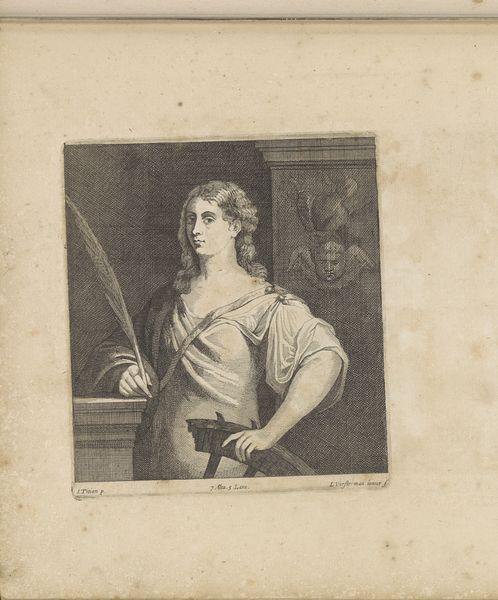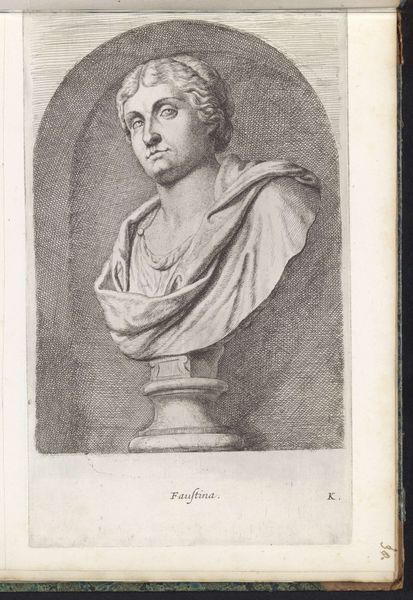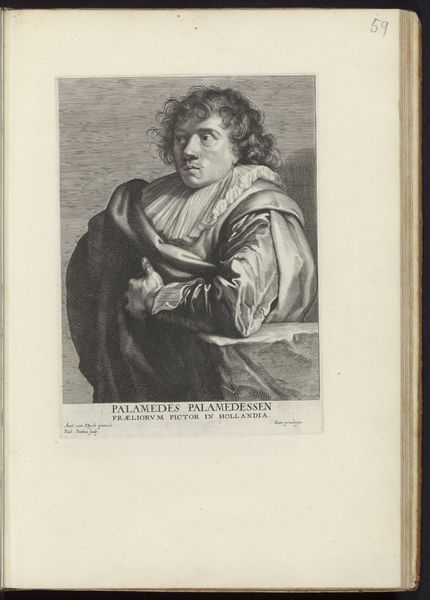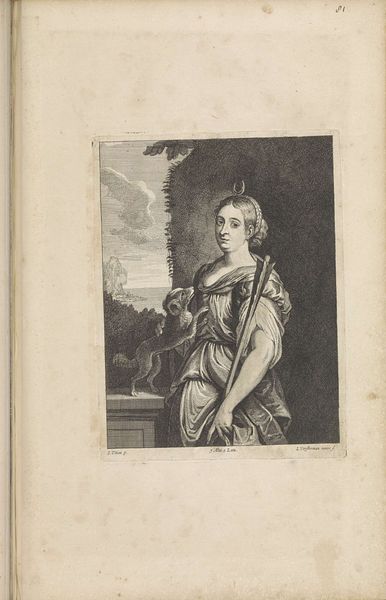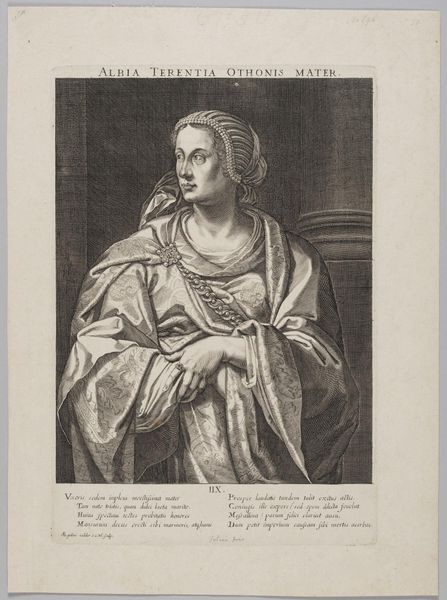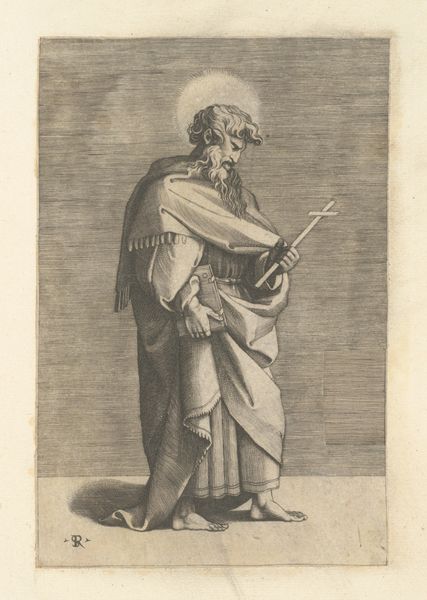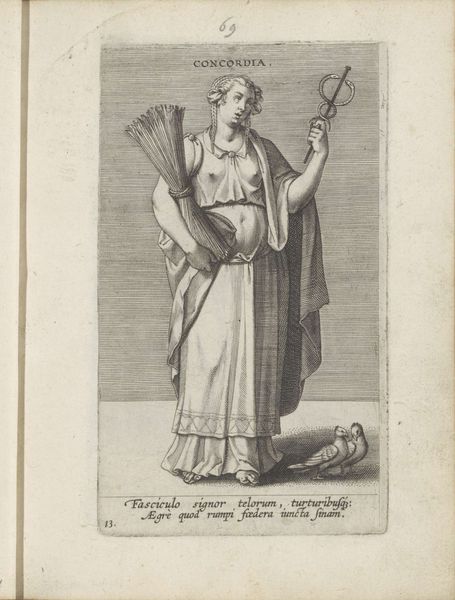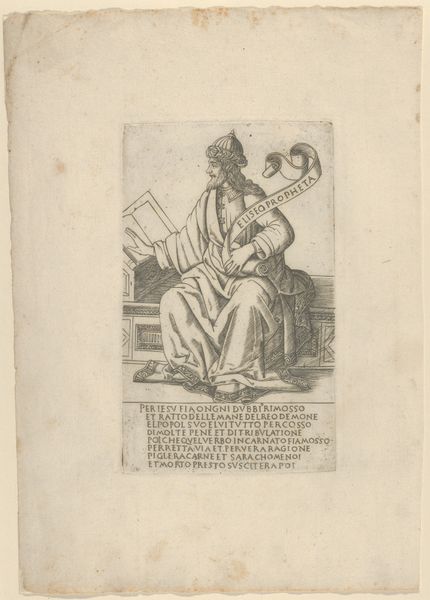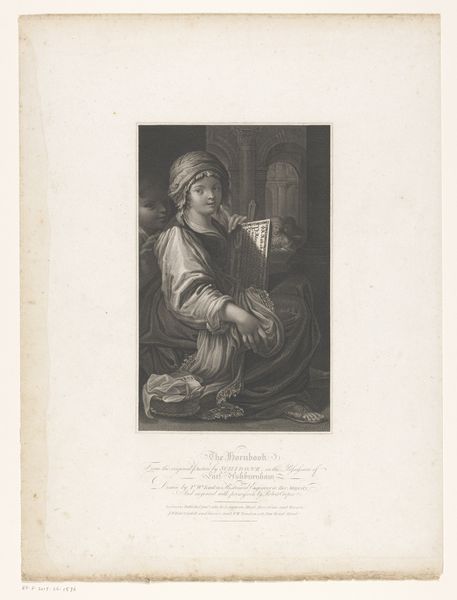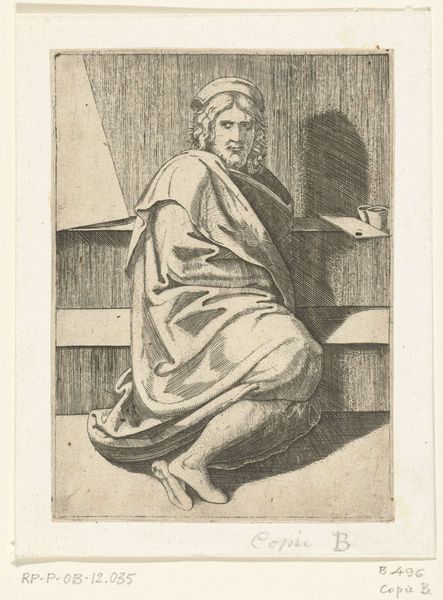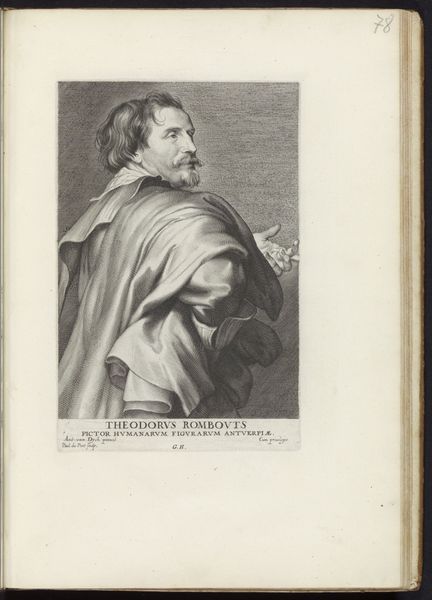
print, engraving
#
portrait
#
baroque
# print
#
old engraving style
#
figuration
#
history-painting
#
engraving
Dimensions: height 225 mm, width 173 mm
Copyright: Rijks Museum: Open Domain
Editor: This engraving, "Death of Lucretia" by Jan van Troyen from around 1660, presents a rather solemn image. There's a dramatic intensity in her gaze and the way she holds the dagger. How do you interpret the symbolism within this piece? Curator: Indeed. The enduring appeal of Lucretia’s story stems from its potent symbols: female virtue, sacrifice, and the struggle against tyranny. The dagger, of course, is central. It's not merely an instrument of death but a visual embodiment of her resolve, of the violation she suffered, and of her subsequent honor-driven decision. Notice where she positions it? Editor: Pointed at her throat? What does that signify? Curator: Precisely. It points directly toward the core of her being, both literally and figuratively. In choosing death over dishonor, she reclaims agency. The act itself becomes a potent symbol of resistance against the abuse of power. We should ask, what does the surrounding drapery suggest to you? Is it haphazard? Editor: Not exactly, there’s a clear contrast. The rough fur-lined wrap suggests some luxury perhaps, clashing with the delicate cloth. Curator: Excellent! The contrast in textures – the coarse fur against the fine linen – could be read as the conflict between her social standing and her personal agony. Van Troyen skillfully employs visual symbolism to tell a complex story of honor, shame, and defiance. Her expression, despite the grim act, shows control, isn't it striking? Editor: It really is, and it is interesting how those simple details, the placement of the dagger, the robes around her…they become like a language that speaks to much bigger ideas about honor and resistance. Curator: Absolutely. Visual symbols form a bridge across time, connecting us to the values and anxieties of past cultures. Studying these images provides insights into the psychological landscape of the 17th century. Editor: Thank you, that's given me a whole new appreciation for what's happening beyond the surface!
Comments
No comments
Be the first to comment and join the conversation on the ultimate creative platform.

